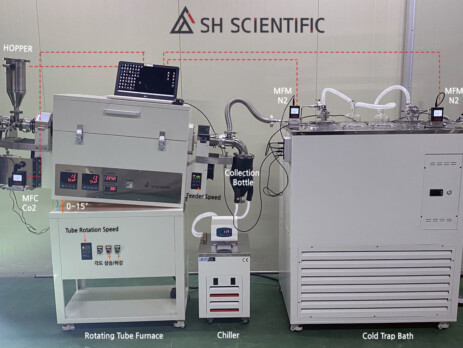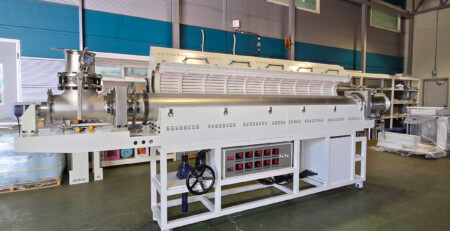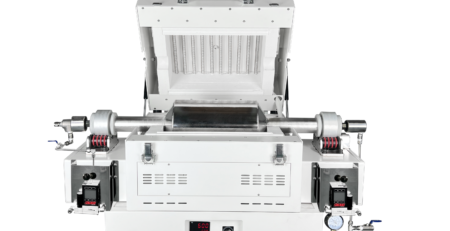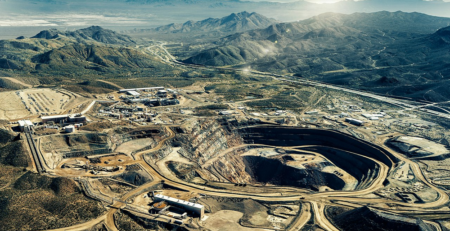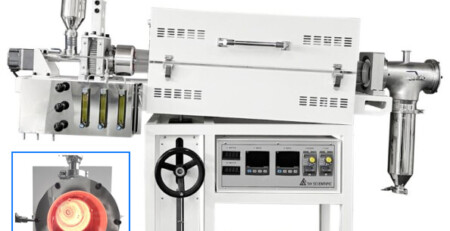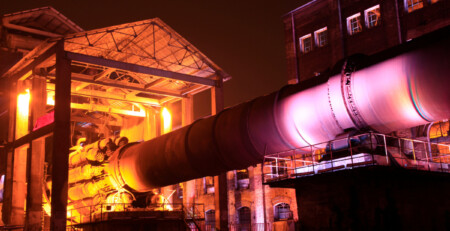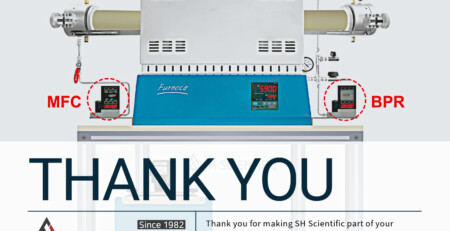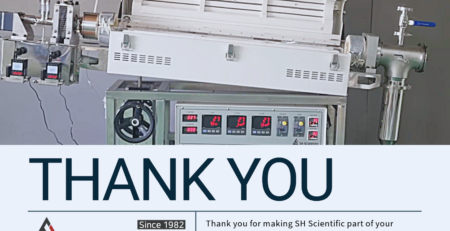Vacuum Oven & Rotary Tube Furnace for Biomass Torrefaction & Pyrolysis
Pyrolysis and torrefaction require feeding organic matter continuously at low to moderate temperatures.
This process is mechanically straightforward, but biomass poses some practical challenges. For instance:
- Its moisture content is conducive to clumping.
- It’s often high in lignin and certain resins that cause tar accumulation in the furnace.
- It may require wider tubes than most furnace vendors offer.
- Some samples and processes need exceptionally tight atmospheric control
SH Scientific rotary tube furnaces are purpose-built to solve these issues for consistent, large-scale, and cost-efficient pyrolysis and torrefaction.
Understanding biomass drying & decomposition
Biomass comprises living organisms—or what remains of them. As such, it’s rich in sequestered energy.
Crude forms like charcoal have been in use since ancient times. Modern techniques turn varied types of biomass into viable energy sources at commercial or industrial scale. Think of not only direct combustion, but methane for power generation, biodiesel for vehicles, biochar for soil amendment, and so forth.
All the above are fundamentally processed in one of two ways.
Pyrolysis

Pyrolysis (thermal decomposition) occurs at roughly 500°–800° C in the absence of oxygen. High temperatures break down polymers while the non-oxidative atmosphere prevents combustion, so the products are themselves combustible and energy-dense.
Pyrolysis mainly produces three kinds of substances:
- Biochar (solid)
- Bio-oil (liquid)
- Syngas (gas)
All else being equal, the proportion of each product depends on heating parameters. For instance, recent research confirms that “slow pyrolysis” conditions (slower heating and longer holding times) tend to maximize bio-char yield, whereas “fast pyrolysis” conditions (more rapid heating) should maximize bio-oil production.
Torrefaction (mild pyrolysis)

The other common technique is torrefaction, also known as mild pyrolysis. It occurs at lower temperatures—roughly 200°–300° C—in a low- or no-oxygen environment. Torrefaction is a much slower process than pyrolysis, often measured in hours rather than minutes.
The goal of torrefaction is not to decompose a sample into different materials. Instead, it makes biomass more suitable for fuel by rendering it energy-dense, hydrophobic, and insusceptible to decomposition.
Key variables in pyrolysis & torrefaction
A few factors play an outsized role in the results of pyrolysis and torrefaction. These are by no means exhaustive, but scientists regard these as the main variables that a technician might control or account for.
- Sample composition: The main constituents of biomass (cellulose, hemicellulose, and lignin) each decompose into different substances, at different temperatures and rates, with different volatile and ash byproducts. In other words, biomass composition determines what a sample could yield, and the parameters below determine what it does yield.
- Processing temperature: As a rule of thumb, high pyrolysis temperatures tend to yield more non-condensable gases (syngas) whereas lower temperatures maximize output of solid products (like charcoal or torrefied biocoal).
- Residence time: A sample’s residence time in the furnace chamber affects how fully it decomposes as well as how much its vapors condense. This is easily controlled by adjusting the chamber’s tilt and/or rotational speed.
- Sample particle size: Smaller particles are easier for heat to permeate, and also represent a larger percentage of total exposed surface area. All else being equal, that leads to more rapid and thorough pyrolysis and torrefaction.
Biomass pyrolysis & torrefaction in the real world
Every day, thermal treatments unlock more renewable and sustainable forms of energy. Below are a handful of the most exciting applications.
Biomass valorization
- Biochar and heat/steam production: Biomass pyrolysis produces biochar for soil amendment and environmental applications. Heat from the process can be harnessed for steam or heating purposes.
- Biocoal and solid fuels production: Torrefaction of biomass creates biocoal, a high-energy solid fuel suitable for power generation and heating applications.
- Liquid smoke applications: Pyrolysis of biomass yields liquid smoke, a product used in food flavoring and preservation.
- Wood vinegar production: Wood vinegar, a versatile organic compound with applications in agriculture and pest control, is obtained from the condensates of biomass pyrolysis.
- Renewable, synthetic gases: Biomass pyrolysis generates syngas, a mixture of hydrogen (H2) and methane (CH4), which can be used as a renewable energy source or chemical feedstock.
Sewage sludge valorization
- Sludge carbonization: Pyrolysis of sewage sludge at moderate temperatures produces a sterilized, energy-rich material suitable for various applications including energy recovery.
- Sludge to heat: High-temperature (~800° C) pyrolysis of sewage sludge efficiently generates heat and energy-rich syngas, which can be used for power generation and heating.
Rubber from end of life tires
- Recovered carbon black (rCB) and heat: Tire pyrolysis recovers carbon black, a valuable material for rubber, paint, in, and even batteries, while also generating heat energy.
Optimizing rotary tube furnaces for pyrolysis
All these scenarios (and more) require continuous feeding through environments with strict thermal and atmospheric control.
Otherwise, there’s a high risk of oxidation or uneven heating, which may jeopardize safety, predictability, and efficiency.
Rotary tube furnaces are widely used for this purpose. However, some of them provide a crude user experience that they inherit from larger rotary kilns. Others are constrained by limited capacity, like that of more typical lab furnaces.
Our rotary tube furnaces offer the utility of a rotary kiln in a more refined package for indoor use. We’ve incorporated critical features for continuous pyrolysis, such as:
- A standard maximum operating temperature of 1,300°C.
- A heating jacket for tar mitigation.
- Smooth, clump-free feeding via a screw conveyor, vibration mechanism, and hammer.
- A quartz viewing port for safe and non-disruptive observation.
- Widely customizable heating zones—at least 2 x 300 mm per furnace, with the option for 5+.
- An optional turn-key gas management system comprising a vacuum pump, chiller, digital mass flow controller, and back pressure regulator.
The end result is a uniquely user-friendly and intuitive rotary furnace that delivers continuous processing with best-in-class thermal and atmospheric precision.
Getting started with SH Scientific
Our rotary tube furnaces offer world-class precision and safety at an unrivaled value.
Every model reflects decades of real-world feedback from research universities, state and federal government labs, and private-sector R&D teams.
And thanks to in-house engineering and end-to-end control over production, we specialize in customizations that the bigger brands will seldom accommodate.
To discuss specs and requirements, or to learn more about purchasing and installation, please reach out to our US sales team.

